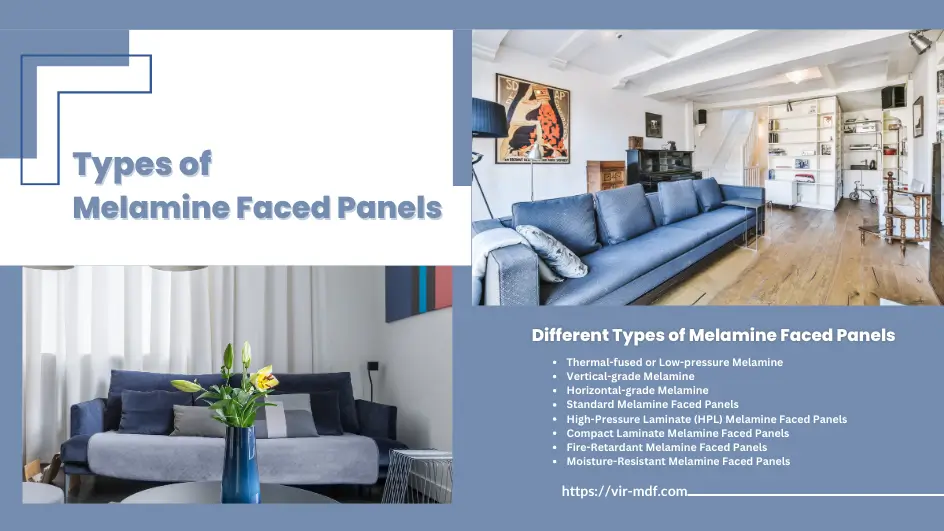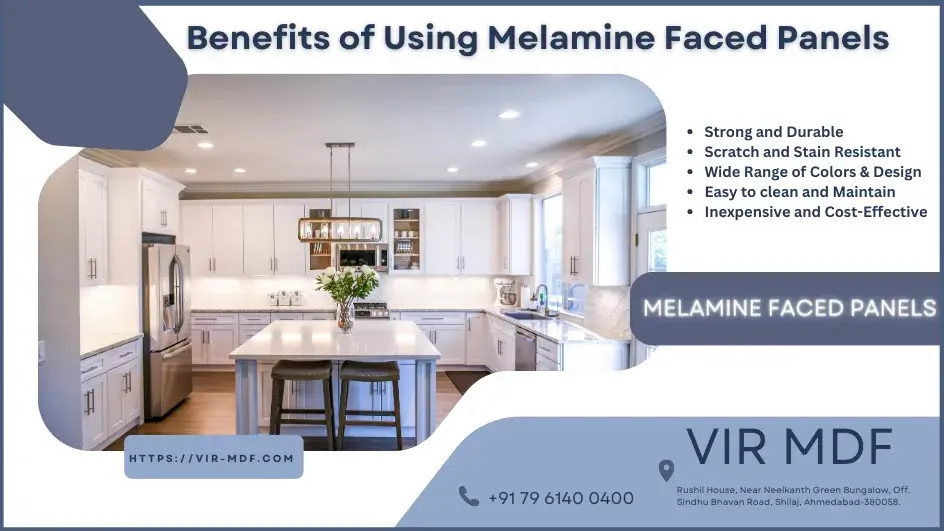Types of Melamine Faced Panels
Posted on April 11, 2023
Are you tired of sifting through endless options for your home renovation project? Look no further! Melamine faced panels are a versatile and cost-effective solution, perfect for everything from cabinetry to shelving. But with so many types available on the market, it can be overwhelming to choose which one is right for you.
In this blog post, we'll break down the different types of melamine faced panels and their unique features, helping you make an informed decision for your next DIY project or professional installation. Let's get started!

Different Types of Melamine Faced Panels
Melamine is a synthetic material that is widely used in the production of furniture and cabinetry due to its durability, versatility, and affordability. There are various types of melamine available in the market, each with unique features and benefits.
- Thermal-fused or Low-pressure Melamine
- Vertical-grade Melamine
- Horizontal-grade Melamine
- Standard Melamine Faced Panels
- High-Pressure Laminate (HPL) Melamine Faced Panels
- Compact Laminate Melamine Faced Panels
- Fire-Retardant Melamine Faced Panels
- Moisture-Resistant Melamine Faced Panels
This type of melamine is created by fusing a melamine-impregnated paper onto a substrate using heat and pressure. The substrate can be made of materials such as particleboard, MDF (medium-density fiberboard), or plywood. Low-pressure melamine is typically used in the production of ready-to-assemble furniture, store fixtures, and cabinets. It is available in a range of colours, patterns, and textures and is known for its affordability, durability, and ease of maintenance.
Vertical-grade melamine is made by laminating a thin layer of melamine paper onto a substrate using heat and pressure. The substrate is typically made of particleboard or MDF, and the resulting panel is relatively thin and lightweight. Vertical-grade melamine is commonly used for interior wall panels, partitions, and doors, as it is highly resistant to scratches, stains, and impact. It is available in a range of solid colours and wood grain patterns, making it suitable for a variety of design applications.
Horizontal-grade melamine is similar to vertical-grade melamine, but it is typically thicker and more durable. It is used for horizontal surfaces such as tabletops, countertops, and desktops, where it is exposed to more wear and tear. Horizontal-grade melamine is available in a range of colours, patterns, and textures, and is highly resistant to scratches, stains, and heat. It is often used in commercial and institutional settings such as schools, hospitals, and offices, where durability and ease of maintenance are critical.
These panels are made of particleboard or MDF substrate with a decorative melamine paper layer on the surface. They are available in a wide range of colours, patterns, and textures, making them ideal for various applications such as furniture, cabinetry, and wall panels.
These panels are made by bonding several layers of kraft paper impregnated with melamine resin under high pressure and temperature onto a substrate. The resulting panel is extremely durable, resistant to scratches, impact, and wear, and suitable for high-traffic areas such as commercial and institutional interiors.
Similar to HPL panels, compact laminate panels are made of multiple layers of kraft paper impregnated with melamine resin. However, they are manufactured using a higher pressure and temperature process, resulting in a denser, more durable panel that is resistant to water, heat, and chemicals. These panels are commonly used in wet environments such as bathrooms, locker rooms, and healthcare facilities.
These panels are treated with a fire-retardant additive during the manufacturing process, making them resistant to fire and smoke. They are commonly used in public buildings, such as schools, hospitals, and hotels, where fire safety is a critical concern.
These panels are treated with a moisture-resistant additive, making them ideal for use in humid environments such as kitchens, bathrooms, and laundry rooms. They are available in a variety of colours and textures, making them suitable for a range of design applications.
Benefits of Using Melamine Faced Panels

Melamine faced panels are an excellent choice for a variety of applications due to their many benefits. Some of the benefits of using melamine faced panels include:
- Melamine faced panels are very strong and durable, making them ideal for high-traffic areas or areas where there is a risk of impact damage.
- They are easy to clean and maintain and resist staining and scratching.
- Melamine faced panels are available in a wide range of colours and designs, making it easy to find a look that suits your needs.
- Melamine faced panels are relatively inexpensive, making them a cost-effective solution for many projects.
Conclusion:
Melamine faced panels offer a stylish and modern look to any interior space. With so many different types of melamine faced panels available, there is sure to be one that suits your needs perfectly.
Whether you are looking for something classic, contemporary or unique, this type of panel can provide the perfect solution. Keep in mind that each type of panel comes with its advantages and disadvantages, so do some research before making a final decision. Ultimately, choosing the right melamine faced panel for your project will ensure it looks great and provides maximum durability for years to come.